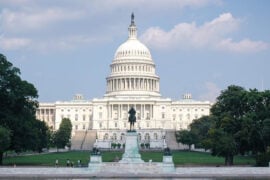In brief
The NYSE and Nasdaq have given listed companies more time to adopt their Clawback policy, with the new proposed effective date of their rules being October 2, 2023 with a requirement to adopt the policy by December 1 (subject to SEC approval).
In depth
In welcome news for US-listed companies, both the New York Stock Exchange (NYSE) and Nasdaq have extended the effective date of their proposed listing standards to implement the Dodd-Frank clawback requirement to October 2, 2023 (see the NYSE Amendment and the Nasdaq Amendment, filed with the Securities and Exchange Commission (SEC) on June 5, 2023 and June 6, 2023, respectively). If the SEC approves the listing rules as proposed, listed companies will have until December 1, 2023 to adopt a compliant clawback policy and will be required to apply the policy to recover from executive officers any erroneously-awarded incentive compensation for which the financial reporting measure is attained on or after October 2, 2023. Additionally, the disclosures required by the rule, including filing the clawback policy as an exhibit to the annual report, would apply for filings made with the SEC on or after October 2, 2023.
The extension of the deadline brings the timeline for compliance into greater alignment with that initially anticipated following the SEC’s finalization of Rule 10D-1 under the Securities Exchange Act of 1934, which required the listing standards to become effective by November 28, 2023, with 60 subsequent days to adopt the clawback policy. In amending their proposed listing standards, both the NYSE and Nasdaq recognized this, noting that the extension is consistent with the expectations of listed issuers given a statement by the SEC in the Rule 10D-1 adopting release that issuers would need adequate time to develop appropriate clawback policies, including in some cases the renegotiation of certain contracts, and that issuers would have more than a year from the publication of Rule 10D-1 to prepare and adopt compliant clawback policies.
The NYSE’s amendment to its initial proposed listing standards also adjusts the potential delisting process that will apply if an issuer fails to recover erroneously-awarded incentive compensation reasonably promptly or fails to comply with applicable SEC disclosure requirements, such that the NYSE may allow for a cure period in such instances, rather than immediately suspending trading of the issuer’s listed securities and commencing delisting (the same cure period provisions apply in the case where the clawback policy is not adopted when required).
Next Steps
In other respects, the proposed listing standards of both exchanges align with those initially proposed, such that companies that have already drafted or adopted their clawback policies should not need to revise them to address the amendments. And, of course, companies that have not adopted their policies can enjoy a welcome reprieve from the need to do so over the summer. Meanwhile, with the compliance date on the horizon, all US-listed companies should be conducting a comprehensive review of the compensation arrangements that may be subject to clawback, as well as of arrangements relating to other forms of compensation that may serve as supplementary recoupment sources, with an eye to bolstering their contractual authority to recover compensation by whatever means practicable, to the extent needed to comply with this new mandatory clawback rule.
For more detailed information on Rule 10D-1 and the clawback requirement, see our previous client alert.






